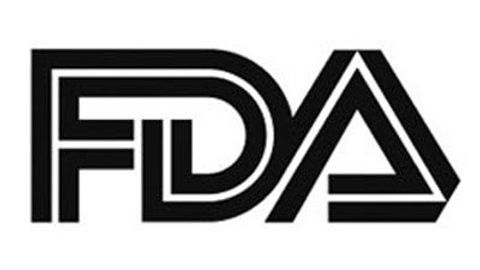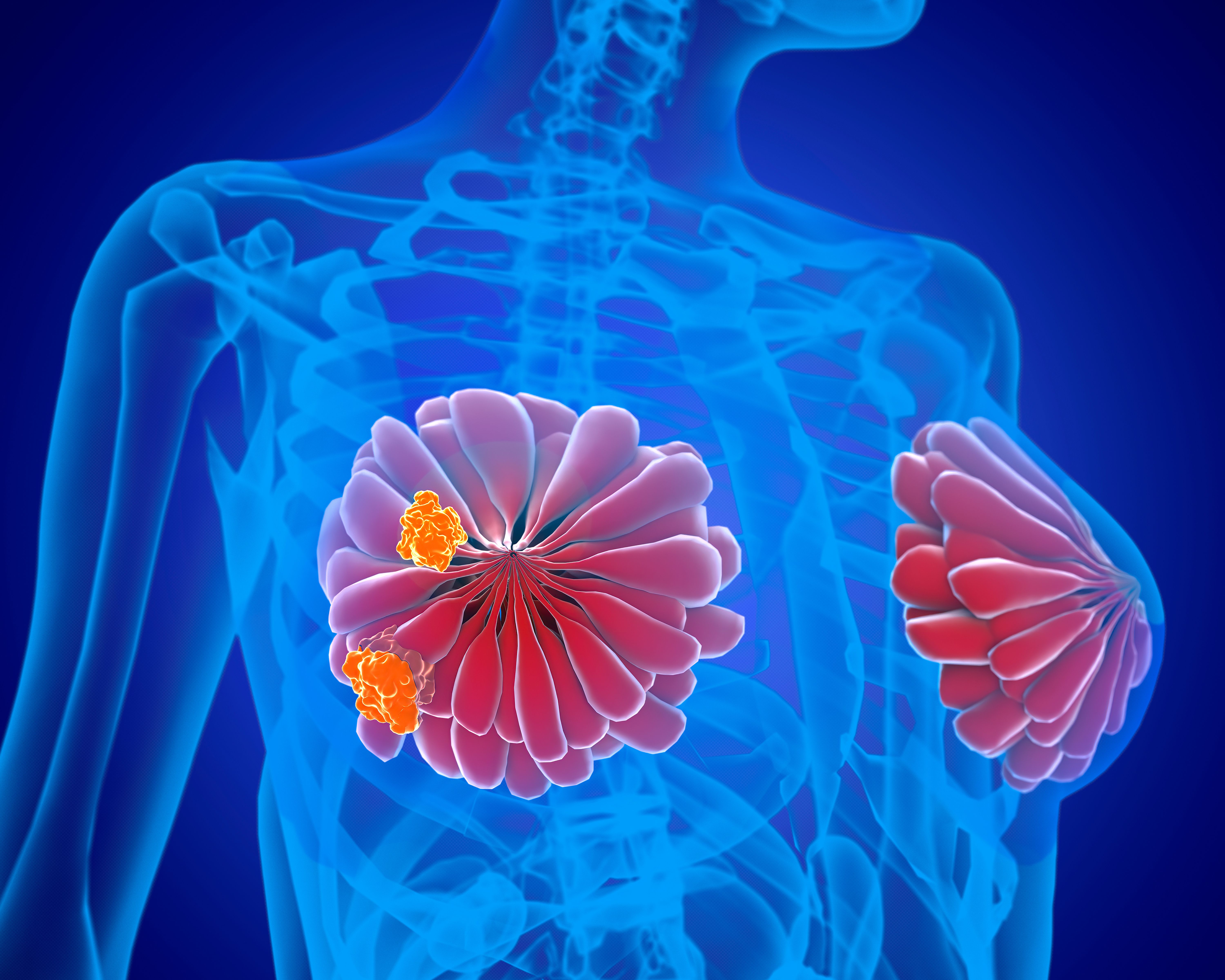FDA Approves T-DXd in HR+, HER2-Low/Ultralow Breast Cancer
The FDA approved trastuzumab deruxtecan for adult patients with unresectable or metastatic HER2-low or HER2-ultralow breast cancer, based on phase 3 DESTINY-Breast06 trial results.

- The FDA has granted approval to fam-trastuzumab deruxtecan-nxki (T-DXd; Enhertu) for treating adult patients with unresectable or metastatic, hormone receptor–positive, HER2-low (immunohistochemistry [IHC] 1+ or 2+/ISH-) or HER2-ultralow (IHC 0 with membrane staining) breast cancer, as determined by an FDA-approved test, that has progressed on 1 or more endocrine therapies in the metastatic setting.
- The approval is supported by findings from the phase 3 DESTINY-Breast06 trial (NCT04494425).
- In the study, T-DXd demonstrated significant progression-free survival (PFS) benefits over chemotherapy in both HER2-low and HER2-ultralow populations.
The FDA has approved trastuzumab deruxtecan for the treatment of adult patients with unresectable or metastatic, hormone receptor–positive, HER2-low (immunohistochemistry [IHC] 1+ or 2+/ISH-) or HER2-ultralow (IHC 0 with membrane staining) breast cancer, as determined by an FDA-approved test, that has progressed on 1 or more endocrine therapies in the metastatic setting.1
Findings from the phase 3 DESTINY-Breast06 trial support this regulatory decision. In the study, T-DXd led to a 36% reduction in the risk of disease progression or death compared with chemotherapy (HR, 0.64; 95% CI, 0.54-0.76; P < .0001). Patients with HER2-low disease given T-DXd (n = 359) had a median PFS of 13.2 months per blinded independent central review (BICR) assessment vs 8.1 months for those given investigator’s choice of chemotherapy (n = 354; HR, 0.62; 95% CI, 0.51-0.74; P <.0001).2 HER2-low status was defined as immunohistochemistry [IHC] 1+ or IHC 2+/in situ hybridization [ISH]– and HER2-ultralow status was defined as IHC 0 with membrane staining.
In the intention-to-treat (ITT) population, which was made up of patients with HER2-low and -ultralow disease, T-DXd showed similar efficacy for those with HER2-low status with a median PFS of 13.2 months in the T-DXd (n = 436) group vs 8.1 months in the chemotherapy group (n = 430; HR, 0.63; 95% CI, 0.53-0.75; P <.0001). For those with HER2-ultralow disease given T-DXd, (n = 76) the median PFS was 13.2 months vs 8.3 months in the chemotherapy arm (n = 76; HR, 0.78; 95% CI, 0.50-1.21).
“In ER-positive, metastatic breast cancer, whenever you are thinking of chemotherapy for a patient, that is where potentially T-DXd is an option, as seen in the DESTINY-Breast06 study,” explained Aditya Bardia, MD, MPH, FASCO, professor, department of medicine, division of hematology/oncology, director of translational research integration, UCLA Health Jonsson Comprehensive Cancer Center, Los Angeles, CA, in an interview with Targeted OncologyTM.
This decision comes after the agent was granted a priority review designation to a supplemental biologics license application in October 2024, and after the August 2022 approval of T-DXd for HER2-low breast cancer, based on the DESTINY-Breast04 trial (NCT03734029).3 Notably, that study included patients irrespective of hormone receptor status, and T-DXd was evaluated in an earlier line of treatment in DESTINY-Breast06.
About the DESTINY-Breast06 Study
DESTINY-Breast06 was a multicenter, open-label, randomized trial which enrolled patients with hormone receptor–positive metastatic breast cancer that was either HER2-low or -ultralow.2
Patients had to be chemotherapy-naive in the metastatic setting and had previously received at least 2 lines of endocrine therapy with or without targeted therapy for metastatic breast cancer. Alternatively, they could have 1 prior line of treatment in the metastatic setting, with either progression within 6 months of starting first-line endocrine therapy plus a CDK4/6 inhibitor or recurrence within 24 months of adjuvant endocrine therapy.
Once enrolled, patients were randomly assigned in a 1:1 fashion to receive 5.4 mg/kg of T-DXd once every 3 weeks or investigator’s choice of chemotherapy, which consisted of capecitabine (Xeloda; 59.8%), nab-paclitaxel (Abraxane; 24.4%), or paclitaxel (15.8%). Stratification factors included prior CDK4/6 inhibitor use (yes vs no), HER2 expression (low vs ultra-low), and prior taxane use in the non-metastatic setting (yes vs no).
3D rendering of breast cancer: © Giovanni Cancemi - stock.adobe.com

The primary end point was BICR-assessed PFS in the HER2-low population.Secondary end points consisted of PFS in the ITT population, overall survival (OS) in the HER2-low and ITT populations, investigator-assessed PFS in the HER2-low population, overall response rate (ORR) in the HER2-low and ITT populations, safety, and patient-reported outcomes (PROs).
In the ITT population, the median age of patients was 58.0 years (range, 28-87) in the T-DXd group and 57.0 years (range, 32-83) in the chemotherapy group. In the T-DXd and chemotherapy groups, most patients (57.8% and 59.8%) had an ECOG performance status of 0.
HER2 status included IHC 0 with membrane staining, observed in 17.4% of patients receiving T-DXd and 17.7% of those receiving chemotherapy; IHC 1+, found in 54.8% of the T-DXd group and 54.4% of the chemotherapy group; and IHC 2+/ISH–, present in 26.8% of patients treated with T-DXd and 27.4% of those receiving chemotherapy. Moreover, patients had either estrogen receptor (ER)–positive/progesterone receptor (PR)–positive disease (58.0%; 55.1%), ER-positive/PR-negative disease (38.3%; 42.1%), or ER-negative/PR-positive disease (0.7%; 0.5%).
Additional Safety and Efficacy Findings
Efficacy data showed that T-DXd demonstrated favorable OS trends in both the HER2-low population (HR, 0.83) and the ITT population (HR, 0.81), with respective 12-month OS rates of 87.6% vs. 81.7% for HER2-low and 87.0% vs. 81.1% for the ITT population.
In the HER2-ultralow population, a positive OS trend was also observed (HR, 0.75), with 12-month OS rates of 84.0% for T-DXd and 78.7% for chemotherapy. Additionally, T-DXd showed a significant PFS benefit across all prespecified subgroups in the HER2-low population.
T-DXd achieved a confirmed ORR of 56.5% in the HER2-low population, compared with 32.2% for chemotherapy. Similarly higher ORRs were also seen in the ITT (57.3%) and HER2-ultralow populations (61.8%). The clinical benefit rate for T-DXd was also higher, reaching 76.6% in both the HER2-low and ITT populations, vs 53.7% and 51.9% for chemotherapy, respectively.
Additionally, the median duration of response for those given T-DXd was significantly longer at 14.1 months for HER2-low and 14.3 months for ITT compared with 8.6 months for chemotherapy in both populations.
Looking at safety, T-DXd correlated with a higher incidence of treatment-emergent adverse events (TEAEs), with 98.8% of patients experiencing any-grade TEAEs vs 95.2% for chemotherapy. The rates of grade 3 or higher treatment-related adverse events were also higher in the T-DXd group (40.6% vs 31.4%).
T-DXd treatment led to higher rates of nausea, fatigue, alopecia, and neutropenia, while chemotherapy was associated with more cases of peripheral sensory neuropathy and palmar-plantar erythrodysesthesia.
In terms of specific safety concerns, T-DXd showed a significantly higher incidence of interstitial lung disease/pneumonitis (11.3%) and decreased left ventricular ejection fraction (8.1%) compared with chemotherapy. Further, T-DXd had higher rates of treatment discontinuation (14.3% vs 9.4%) and dose reductions (24.7% vs 38.6%) due to AEs, with pneumonitis being the most common cause of discontinuation (5.3%).
There were also reports of treatment-related deaths, with 2.5% of patients in the T-DXdarm and 1.4% in the chemotherapy group, though no cases of cardiac failure were reported in the T-DXd group.
REFERENCES:
1. FDA Enhertu approved in the US as first HER2-directed therapy for patients with HER2-low or HER2-ultralow metastatic breast cancer following disease progression after one or more endocrine therapies. News Release. AstraZeneca. January 27, 2025. Accessed January 27, 2025. https://www.astrazeneca.com/media-centre/press-releases/2025/enhertu-approved-in-us-for-breast-cancer-post-et.html
2. Curigliano G, Hu X, Dent RA, et al. Trastuzumab deruxtecan (T-DXd) vs physician’s choice of chemotherapy (TPC) in patients (pts) with hormone receptor-positive (HR+), human epidermal growth factor receptor 2 (HER2)-low or HER2-ultralow metastatic breast cancer (mBC) with prior endocrine therapy (ET): primary results from DESTINY-Breast06 (DB-06). J Clin Oncol. 2024;42(suppl 17):LBA1000. doi:10.1200/JCO.2024.42.17_suppl.LBA1000
3. FDA approves fam-trastuzumab deruxtecan-nxki for HER2-low breast cancer. FDA. August 5, 2022. Accessed January 3, 2025. https://tinyurl.com/zdbkwzhn
The Targeted Pulse: Sniffing out the Latest From ASCO GI 2025 and Fresh FDA Activity
February 2nd 2025Aspirin reduced recurrence by 50% in PIK3CA-mutated colorectal cancer, the DCISionRT test earned FDA breakthrough status for predicting radiotherapy benefit in DCIS, and nivolumab plus chemotherapy sustained efficacy in gastric/GEJ/esophageal cancers. We also provide an overview of key abstracts from ASCO GI and molecular oncology and how it is changing care.
Read More